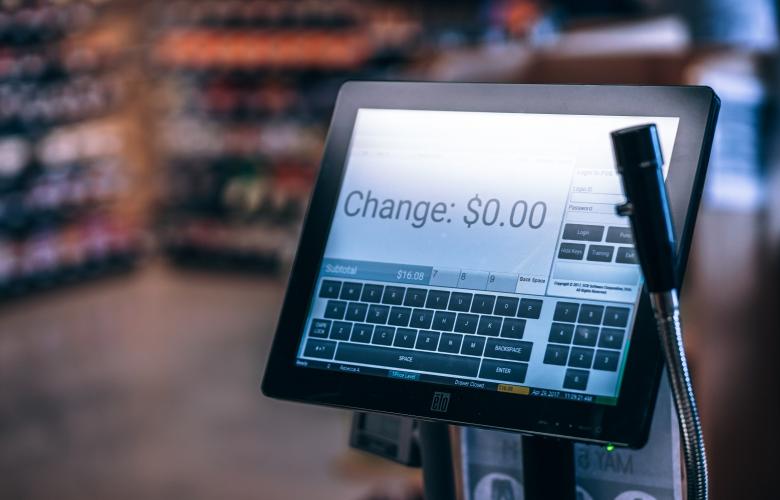Retailers under pressure due to technological change
Contact
Retailers under pressure due to technological change
In their 2019 white paper, Pronto Software and ARA uncover the state of Australian retail technology, finding many retailers are missing out on opportunities.
More than two-thirds of Australian retailers acknowledge that technological changes are causing a major disruption in their industry, according to The State of Australian Retail Technology 2019, a white paper by the retail industry’s peak representative body.
The survey conducted by the Australian Retailers Association (ARA), together with Australian technology company, Pronto Software, examines technology uptake and priorities among the country’s retailers, with responses from 172 retailers.
According to the report, although there is general interest to utilise innovation, many retailers are missing out on opportunities, such as generating buyer insights with loyalty programs and integrated POS systems, which also help to enable offline trading.
Chad Gates, Managing Director, Pronto Software said it was clear that retailers must use technology to transform customer experience, across all touch points.
“Some businesses for example, have invested in e-commerce but it is disjointed to their in-store experience, with no opportunity to leverage insights from one, to improve the other,” said Gates. “This is akin to writing half a story – it merely leads customers to your competitors as they seek their ‘happily ever after’. Challenge your technology partner to build holistic answers that help you close profitability gaps.”
Social media remains digital focus
The review uncovered that retailers are focusing their attention on social media, with 62 per cent of respondents investing, or planning to invest in social platforms over the next 12 months. More broadly in the digital sphere, 85per cent of retailers value having an online sales channels and only 15per cent of respondents (mainly startups) are pursuing a marketplace-only strategy despite the launch of Amazon in Australia.
Russell Zimmerman, Executive Director, Australian Retailers Association, said: “Retailers say that integrating with marketplaces, such as Amazon, can be difficult, given that by their very nature, they are designed to benefit the customers. Many retailers find that they are competing on price where in the past they may not have had to compete in such a highly price sensitive market.”
Offline sales and loyalty programs challenging retailers
Only half of respondents have POS solutions that process sales when offline. This means many risk leaving their customers in the dark - unable to process online payments or use check outs if network connectivity is lost.
Gates said many of the retailers who continue to run older systems do so because they feel a change will be expensive. “The reality is that recent developments make flexible POS capabilities more cost-effective and accessible via simple devices such as tablets.”
While loyalty programs have historically been commonly used to collect information and inform on opportunities to increase revenue, interestingly, the report showed that only 22 per cent of respondents have a loyalty program that is integrated and available, across their stores. This is a significant gap when 43 per cent call out that they intend to leverage reporting and analytics to drive profitability and operational efficiency.
Zimmerman said retailers can adopt technology to allow shoppers to aggregate all the programs they belong to into a single application. “When this customer data is accessible, retailers can use it to tailor offers more effectively and enhance the shopping experience, ultimately creating greater brand loyalty.”
Weak links in the supply chain
The report suggested stock and distribution management is difficult for many retailers, with only half (53 per cent) of surveyed retailers having access to real-time sales and inventory insights. This means many lack the tools to forecast and reallocate inventory in real-time to take advantage of unexpected demand.
Gates commented, “The days of relying on staff to have knowledge of whether something is in stock are gone – especially with expanding product lines. Customers increasingly expect bricks and mortar stores to mimic the visibility and speed they have when shopping online.”
Despite the 24/7 nature of online retail, 71 per cent of respondents are yet to embrace integrated front-end and back-end systems, and are therefore experiencing critical delays in any tactical decision making.
A spotlight on security and staying ahead of the curve
Amid greater data management legislative requirements and a growing spate of retailers experiencing breaches of sensitive customer information, the report found that only a quarter of respondents recognised that vulnerable systems need to be urgently addressed.
Zimmerman noted, “With the pressure for retailers to maintain a good IT security posture at an all-time high, the results surrounding how few retailers have IT security front of mind is concerning.” Speaking more broadly on the retail market climate, he continued, “The current retailing experience in Australia continues to harbour a number of points of friction. Our industry tends to be accustomed to measured, strategic planning but the pace of change in retail now demands rapid action.”
Gates said emerging technologies are helping retailers future-proof and make innovative decisions. “Artificial Intelligence (AI) is already being used to provide real-time information to sales assistants on the shop floor, as well as business decision makers. By integrating what a retailer knows about its shoppers, based on past online behaviour, for example, with what the customer tells the sales associate, AI can help retailers secure greater sales while enhancing the customer experience.”
More from The Business Conversation:
Small businesses confidence in Australia’s growth prospects hits lowest point since 2011
Driving change: Small businesses believe their fleets will be fully electric within 20 years
Australian consumers are least tolerant of poor digital customer service




